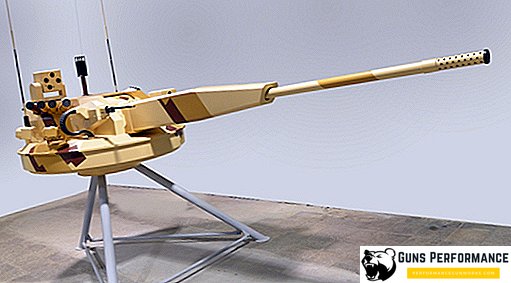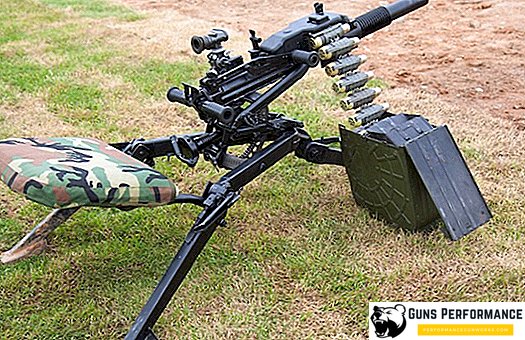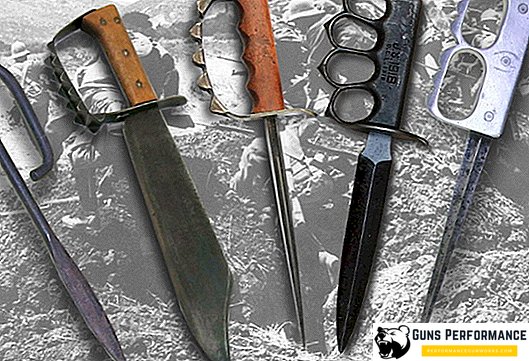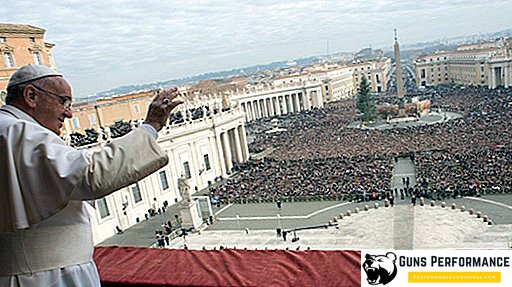The Republic of Honduras is located in Central America. In the past, this country was known by
Named Spanish Honduras. According to the Constitution of the Republic, the main person in the state to whom the government is subordinate is the president. If for any reason the head of state is not able to fulfill his duties, then these functions are transferred to the vice-president, who is considered the second most important person in the state. The power of the President of Honduras is almost unlimited, he can form the Council of Ministers at will, and also appoint or remove from office any ministers. Currently, the presidency of Honduras is Juan Orlando Hernandez, who was re-elected for a second consecutive term in 2018.
The history of Honduras before the advent of the Europeans and the colonization of these lands by the Spaniards
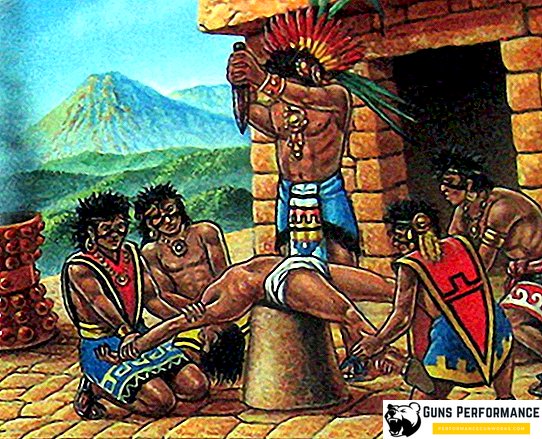
Before the first Europeans reached the shores of America, indigenous Indian tribes lived in the territories of present-day Honduras:
- Paya;
- Lenka;
- Hikake and so on.
These lands were called Igueras. Closer to the 5th century AD, the Mayans came here, whose main tasks were the development of new lands and the conquest of other tribes. Immediately after the Maya, the Toltec tribes came to the southern parts of Honduras, and after a while the Chibcha Indians came here from the territories of modern Colombia.
The name "Honduras" is nothing more than the Spanish word "Hondura", which can be translated into Russian as "depth". When the expedition of Columbus arrived in Spain, the news of the discovery of new lands instantly spread throughout the country. Many conquistadors, whose main goal was profit, hurried to go to the development and looting of new territories. In 1524 there were 4 Spanish expeditions in the territories of modern Honduras.
Upon arrival, the conquerors immediately began to rob the local population. Since the conquistadors were ordinary thieves, they soon began to fight among themselves, often entering into alliances with some Native American tribes. In 1525, the famous Spanish conquistador Hernan Cortes, who had already managed to conquer the entire central part of Mexico, arrived in Honduras. After his appearance, the situation in the country changed dramatically:
- Spanish conquerors recognized the power and authority of Cortes;
- Indian leaders also submitted;
- Several new settlements were established;
- The city of Trujillo was founded, in which Hernan Cortes gave his residence.
In 1526, the famous land conqueror returned to Mexico, and the struggle between the conquistador gangs for power in the region flared up with a new force. The predatory policy of the Spanish conquerors influenced the development of the country extremely negatively:
- Locals ruthlessly exterminated;
- They were used as free labor;
- Picked up as slaves for work on the plantations;
- Many Indian tribes became extinct as a result of epidemics of diseases that were brought to the continent by Europeans.
All these factors led to the fact that the lands of modern Honduras gradually fell into disrepair. In 1536, the situation was slightly stabilized. Pedro Alvaro arrived in the country, who was able to start gold mining there on a serious scale. Because of this, by the middle of the 16th century, the lands of Honduras were included as audiencia in the viceroyalty of New Spain. After some time they became part of Guatemala.
In the 16th century, many gold and silver reserves were discovered in Honduras, attracting immigrants and good luck hunters from all over Europe. All this made the slave labor of the Indians, who put up fierce resistance and did not want to work in the mines, extremely in demand. In 1536 there was a major uprising against the Spanish authorities. Since there was no one to work, the Spaniards began to import black slaves from Africa. Toward the end of the 17th century, mines in which gold and silver were mined developed and fell into disrepair, so the development of the region abruptly stopped. It was only in the 1730s that it was possible to resume the level of mining of precious metals.
Honduran War of Independence in the XIX century

The struggle for the independence of the Spanish colonies in South America began in 1810. In 1821, Guatemala, which included the lands of modern Honduras, proclaimed its independence. An independent country did not last long - in 1822 it became part of the Mexican Empire, headed by Augustin de Iturbide, a former colonel of the Spanish army. The Augustine I Empire existed only until 1823, after which it disintegrated. Then Honduras joined the new federation, which was established in Central America. It includes the following Spanish provinces:
- Guatemala;
- Salvador;
- Nicaragua;
- Honduras;
- Costa Rica.
The new state was called the United Provinces of Central America. In 1824, a constitution was adopted in the country, which was very liberal. The federation existed until 1839, after which it broke up into separate states.
The first years of existence as an independent and independent country did not bring any stability to Honduras, although initially everything went very well:
- In 1839, the Constitution was adopted;
- In 1841 he was elected the first president, who became General Ferrera;
- After this, a period of political instability, coups and seizures of power began;
- In 1848, a new Constitution was adopted.
The entire XIX century did not bring Honduras stability, as constant revolutions, civil strife and the intervention of major world powers did not allow the region to develop peacefully in economic terms.
The development of Honduras in the XX century

Toward the end of the 19th century, commercial companies from the United States laid huge banana plantations in Honduras. A few years later, banana exports began to bring high income to the country. The most famous companies operating in the region are United Fruit and Standart Fruit and Shipment. Due to the fact that the merchants did not skimp on bribes, they soon began to play an important role in the politics of the region. When another revolution or popular unrest occurred in the country, the United States deployed its troops to protect the people and their property in Honduras.
The instability in the region almost completely disappeared when General Tiburcio Carias Andino came to power in the country. He established a dictatorship and quickly got rid of all his political opponents using scare tactics, criminal prosecution and expulsion from Honduras. The constitution was amended by presidential decree, which allowed the head of state to remain in office until 1949. Despite the fact that the Second World War began, and there was a crop failure of bananas, the head of the country managed to maintain the economy at a stable level. During his reign, Andino, by his decrees, did a lot of good things for the development of Honduras:
- The country began to pay off its huge external debts;
- In the countryside, roads began to be laid;
- New schools and hospitals were laid.
During World War II, Honduras sided with the anti-Hitler coalition, and after the war, the president betrayed the US all Nazis who were trying to escape from prosecution in Honduras. Also, at the request of the authorities of the United States of America, all enterprises belonging to the German Nazis were nationalized in the country.
Despite all the benefits that occurred in the country during the rule of Tiburcio Andino, his dictatorial manners caused discontent of the opposition, which was supported by the United States. States were afraid that the dictator could select enterprises and plantations that belonged to American entrepreneurs. In 1949, the dictator was forced to resign. The next came to power, Juan Manuel Galves, who ruled until 1956.
The next president was Carlos Guardéola, but he was killed by the military during the 1962 coup. Since 1963, and ending in 1981, the country was ruled by representatives from the military junta. They failed to cope with the difficult economic situation in the country, which led to strikes and uprisings of peasants and workers. In 1981, liberal elections were held in the country, at which a civilian president was elected. In the 1993 elections, Carlos Roberto Reina won. He created the Human Rights Office, which was investigating the war crimes that took place in the country during the junta. President Rhine won the election campaign thanks to his promises:
- Stabilize the country's economy;
- Reduce the external debts of Honduras;
- Lead a constant fight against corruption;
- Attract foreign investment in the economy;
- Create many new jobs, thereby reducing unemployment.
Like most of the previous presidents of Honduras, the Rhine failed to fulfill even a small part of its promises.
Honduras from 1997 to the present day

In 1997, Carlos Flores Factus became President of Honduras. He was able to conduct a series of liberal reforms:
- A civilian form of control over the country's armed forces was established;
- The Supreme Military Council was abolished;
- The post of chairman of the armed forces was also abolished;
- Police management was also taken from the military and placed in the hands of a civilian government.
In the 2000s, the presidents of Honduras tried to fight corruption and crime, at least they promised it in their electoral speeches. In 2002, trade and diplomatic ties with Cuba were restored, and in 2006 Honduras reached consensus on border disputes. In 2007, thanks to the International Court of Justice, Honduras ended its long-standing territorial dispute with Nicaragua.
In 2009, President Zelaya tried to organize a referendum to change the constitution and extend the terms of his term as president. This led to a military coup on June 28, during which the military took the president to Costa Rica, forbidding them to go back. In September 2009, Zelaya returned to Honduras and took refuge in the Brazilian embassy, insisting that he be returned to power, since his removal and the appointment of new elections are illegal.
In November 2009, presidential elections were held, in which Porfirio Lobo Sosa won. Former President Zelaya did not recognize the election results. His struggle did not lead to anything, so in 2010 the former head of state was forced to leave for the Dominican Republic.
Constitutional foundations of Honduras and features of the form of government

Currently in Honduras, there are 16 counts of the Constitution, which was adopted after the country gained independence from Spain. It was approved in 1982, but after that a number of amendments were made there, the most serious of which were:
- In 1985;
- In 1987;
- In 2005.
According to the constitution it follows that Honduras is a democratic state of law, a form of government in which the republican type. The main carrier of sovereignty and the only source of power is the people of the republic. Citizens of Honduras can express their will directly either through referendums or through their representatives, the deputies of the National Congress.
Any of the citizens of Honduras has the right to be elected to a presidential position, has the right to equal access to government posts in the republic, to freely join any political parties not prohibited in Honduras. In the elections, any citizen of the country can participate voluntarily, while no one has the right to force him to participate or not to participate.
The interaction of the branches of government in Honduras

The interaction of the branches of government is determined by the constitution of Honduras. It clearly states in Article No. 4 that the state power is divided into the following branches:
- Legislative;
- Executive;
- Trial.
All these branches are independent and do not obey each other. However, they must complement each other. The constitution says that no official has the right to combine work in two government posts.
As for the principles of interaction between the National Assembly and the branches of government, the Constitution also has clear instructions on this subject. They say that none of the branches of state power can conduct the following processes in relation to the National Assembly:
- Obstruct formation;
- Interfere with the conduct of meetings;
- Announce its dissolution.
In turn, the National Assembly may express distrust of any branch of state power, even the judiciary, or the Supreme Electoral Court. This was made possible by the amendments that were made to the constitution in 2002 and 2003. As for the right of legislative initiative, they have it:
- All members of the National Congress;
- Supreme Court;
- Supreme Electoral Court;
- President, through interaction with the Council of Ministers.
All bills must first be approved by the National Congress, then transferred to the president for consideration. In Honduras, at the legislative level, it is fixed that only the National Congress can change or repeal laws in the country. At the same time, all judicial and executive institutions have the right to participate in the creation of new laws. This is also enshrined in the Constitution.
Status and Responsibilities of the President of Honduras

The President of Honduras has the following powers:
- He is the head of state;
- Chief Executive;
- The guarantor of the Constitution;
- Chairman of the Council of Ministers;
- Commander in Chief of the armed forces.
The presidential orders, in fact, bear the status of legislative acts, although they must be controlled by the National Assembly of the Republic.
The head of Honduras, like the vice-president, is elected jointly in the general election. To win, it is enough to get the majority of votes, and it does not matter what percentage of voters will vote. The election of the president and vice-president is appointed by the Supreme Electoral Court. The head of the republic is elected for a term of 4 years without the right to be elected for two consecutive terms or for a second term. To participate in the election of the president, residents of the country must meet the following criteria:
- To be born in Honduras;
- To reach the age limit of 30 years;
- Be capable;
- Do not have a spiritual dignity.
According to the constitution, the president of Honduras has broad powers, which allows him to control any branches of government in the state:
- The right of legislative initiative;
- Right veta;
- The right of appointment and removal from the post of ministers;
- The head of the republic may convene a special session of the National Congress.
The president is at the same time the chairman of the government, and all ministers are obliged to cooperate and assist him in governing the state. The Council of Ministers is a body accountable to the head of state.
List of Presidents of Honduras since 1963

Beginning in 1963, the following military and political figures were in power in Honduras:
- 1963-1975 - Osvaldo Enrique López Arellano. In 1963, he accomplished a coup, and came to power under the pretext of fighting communism. His reign was interrupted in 1971-1972, when Arellano allowed to hold elections in the country, which was won by Ramon Ernesto Cruz Ukles. The former head of state at that time held the post of Commander-in-Chief of the armed forces, thus having real power. In 1972 he accomplished a coup, as a result of which he became president;
- 1975-1978 - Juan Alberto Melgar Castro. He came to power after a military coup. Unlike Arellano, he did not support the peasantry, taking the side of large landowners. During his presidency, the foundations were laid for the democratization of society;
- 1978-1982 - Policarpo Juan Paz Garcia. Another head of the military junta. He has been interim president since 1980;
- 1982-1986 - Roberto Suano Cordova. Won the 1981 election. In 1982, he was inaugurated. He established relations with the United States, hoping for the help of states in developing the economy of Honduras. Despite the help, he was unable to correct the economic situation in the republic;
- 1986–1990 - Jose Simon Ascona Hoyo. He became famous as an honest politician who fought against corruption;
- 1990-1994 year - Rafael Leonardo Callejas Romero. I was able to negotiate with the United States to write off $ 430 million of debt;
- 1994-1998 year - Carlos Roberto Reina Idiakes. Made a reform of the armed forces, as a result of which the power passed to civil. Canceled universal military service;
- 1998-2002 - Carlos Roberto Flores. Крупный бизнесмен. Во время его правления на страну обрушился ураган Митч;
- 2002-2006 год - Рикардо Рудольфо Мадуро. Прославился как борец с криминалом;
- 2006-2009 год - Хосе Мануэль Селайя. Был свергнут, так как хотел остаться на второй срок, для чего решил изменить конституцию;
- 2010-2014 год - Порфирио Лобо Сосо;
- 2014-наше время - Хуан Орландо Эрнандес.
Ныне действующий президент Гондураса смог изменить Конституцию и переизбраться на второй срок в 2018 году.
Резиденция главы страны находится в городе Тегусигальпа. Это одноэтажное, ничем не примечательное здание, в котором находится приёмная президента. В западном квартале столицы имеется старый президентский дворец, который был построен в XIX веке. В нём размещался исторический музей, но сейчас это здание закрыто на ремонт, который не могут завершить из-за недостатка финансирования.




